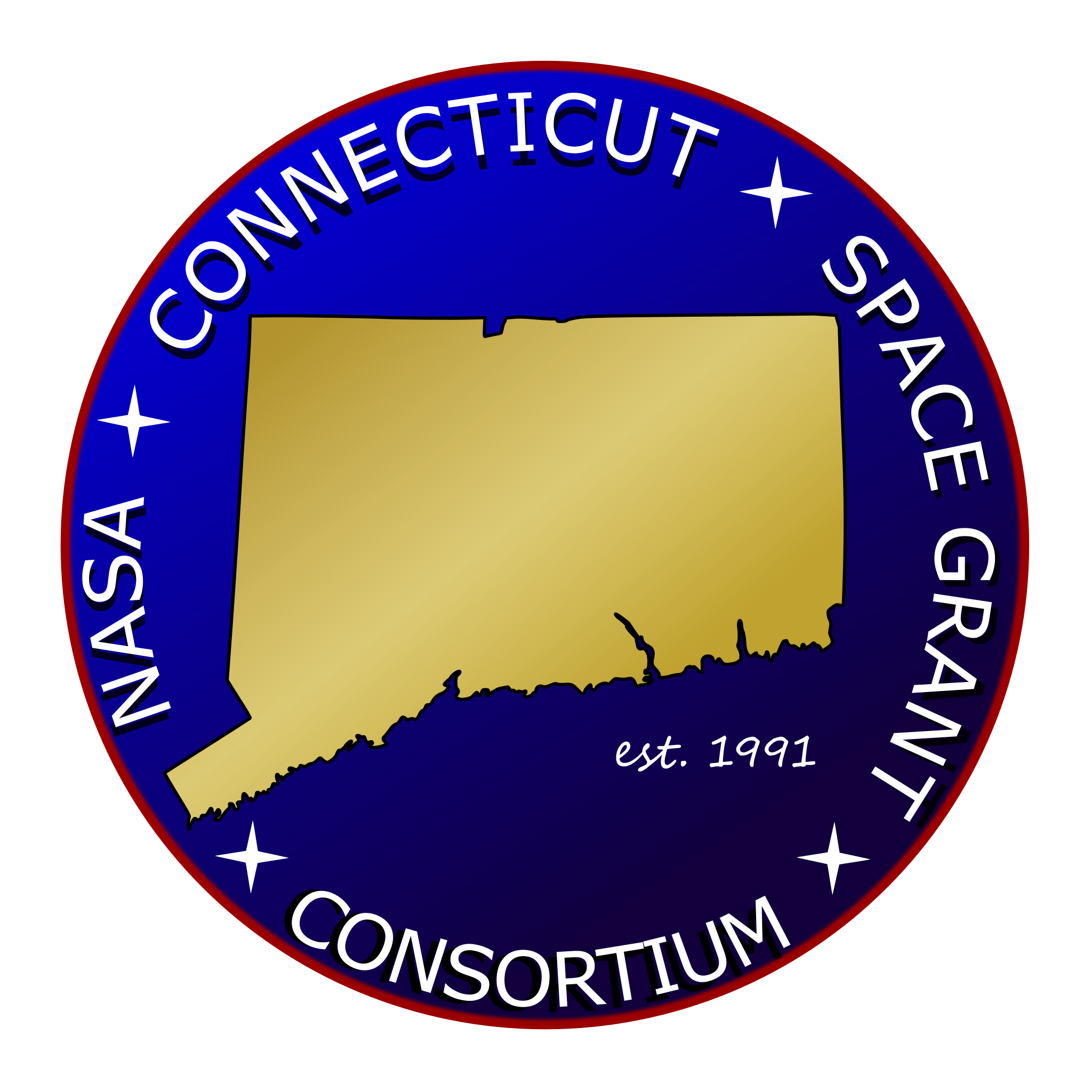
NASA Connecticut Space Grant Consortium (CTSGC) is delighted to announce recipients of its second Spring 2017 call for proposals. The funding programs that were part of this award cycle included: Graduate/Undergraduate Research Fellowships, Project Grants, and Student Travel Grants. Award recipients, which include 18 graduate/undergraduate students, are from 7 NASA CTSGC academic affiliate member institutions. Below are the names of recipients and description of fellowship projects. Congratulations to all the awardees!
Graduate Research Fellowship
Sarah Arveson
Yale University
“Immiscibility of Molten Iron Alloys in Planetary Cores”
In this research, melting experiments will be performed on Fe-Si-O to understand the physicochemical properties of core materials. Preliminary measurements reveal that immiscible melts are produced at high pressures, providing evidence for stratification that may have been integral in sustaining a dynamo before inner core formation. These experiments will provide insight into planetary core evolution.
Sonia Chavez
University of Connecticut
“Nanocoatings to Increase the Barrier Properties and Thermal Insulation for Aerospace Applications”
This project will focus on developing a nanocoating with outstanding barrier properties and thermal insulation for aerospace products. To do so, inorganic nanosheets [montmorillonite (MMT)] will be used with polyvinyl alcohol (PVA) to form a hybrid nanocoating with a highly ordered structure. In addition to PVA, epoxy will be used as an alternative binder to further improve the properties of the substrate and a crosslinking agent will be used to further bond the components through covalent interactions.
Kierstin Daviau
Yale University
“Identifying Exoplanet Interiors from Atmospheric Signals”
This research will investigate the connection between a planet’s interior and atmosphere using high-pressure/temperature experiments on the oxidation reactions between SiC and SiO2, materials proposed to make up carbon-rich exoplanets. Results will be compared to existing and upcoming exoplanetary atmosphere measurements, and frequency bands will be recommended for observation in order to detect a carbon-planet atmosphere.
Jordyn-Marie Dudley
Wesleyan University
“Characterization of Water in Differentiated Achondrite Parent Bodies”
The objective of this study is to determine the water abundance and hydrogen isotopic compositions of 15 achondrite meteorites, characterize their parents bodies, and determine if they provide evidence of a water-rich accretion. Like NASA’s Space Science enterprise, this study aims to generate and communicate knowledge of the evolution of the universe, solar system, planets and anomalous Earth.
Anthony Patelunas
University of Connecticut
“Determination of the Muscle Stem Cell Lineage by Single-cell Transcriptomics”
This project will characterize transcriptional changes of muscle satellite cell progenitors and identify novel markers for activation such as growth factor receptors. Defining development and identifying markers will enable future targeted approaches to activating and maintaining satellite cells in atrophying skeletal muscle.
Undergraduate Research Fellowship
Lauren Atkinson
Eastern Connecticut State University
“Evaluating the Scorpion Microbiome for Diversity and Antibiotic Production”
Scorpions are routinely exposed to potentially deadly microbes since many of their prey are vectors for deadly pathogens. This study aims to test the diversity of the scorpion microbiome and test for antibiotic production by members of the microbiome. The discovery of new antibiotics would benefit the medical community and space exploration, seeing as antibiotic resistance increases under microgravity and human immune systems weaken during missions.
Louis Cappucci
Trinity College
“Ignition Design and Test for a 3-D Printed Titanium Rocket Engine”
This experimental research project will seek to determine the most robust and reliable system of rocket engine ignition, which will be used to build and test a Titanium alloy 3D printed rocket engine. The purpose of this research is to consider several types of ignition methods and to experimentally determine the superior method based on several design consideration.
Lillian Hyde
Eastern Connecticut State University
“Assessment of Microglia Function in Brain and Blood Microenvironments”
This study will assess if microglia activation differs in cerebrospinal fluid compared to fetal bovine serum. By establishing a baseline for microglia function in their native environment, space travel conditions can eventually be tested to asses its affects on the central nervous system.
Celeste Smith and Paula Tartell
Wesleyan University
“The Newberry Volcano Crater Lakes, OR: Analogs for Ancient Planetary Environments?”
Some volcanic lakes bear strong resemblances to early planetary environments. This research will study such a lake at Newberry volcano in Oregon where the local ecosystem is largely provided for by elements provided by the volcano. With the essential nutrients also come volcanic toxins, in this case mercury. The pathways of mercury and CO2 gas from the subaqueous vents and hot springs into the lake will be determined and the effects of toxic mercury will be assessed.
William Tait
University of Connecticut
“Investigation of Hydrate Sodium Carbonate Powders as a Dry Sorbent for CO2, SOx, and NOx”
This project aims to research hydrated sodium carbonate powders (HSCPs), which are a mixture of sodium carbonate and dry water, a powder that is a silica-coated water-air emulsion, as a dry sorbent for carbon dioxide and other gaseous pollutants. The recycling efficiency of HSCPs will also be tested, since being able to recycle the sorbent for reuse would be economically and environmentally friendly.
Dana Wensberg
Trinity College
“Liquid-Fueled Rocket Injector Design for Additive Manufacturing”
This research seeks to develop a fuel injection plate for a liquid bipropellant rocket using additive manufacturing (3D printing). This project will utilize Arcan’s Q20+ machine. The injector must fit to an existing nozzle and set of performance requirements. This research will demonstrate the application of additive technology in high performance rocketry, enhancing NASA’s ability to create more effective components.
Project Grant
Gukyoung An
University of Bridgeport
“CanSat Competition: The Knight Gliders”
Seth Hanson
Central Connecticut State University
“The Implementation of Unmanned Aerial Vehicles for the Detection of Radioactivity”
Tyron Hill
Central Connecticut State University
“Multirotor With Multi-Directional Robotic Arm”
Student Travel
Jalal-ud-din Butt
Central Connecticut State University
Jacob Fanthorpe
Wesleyan University
Melissa Luna
Wesleyan University
